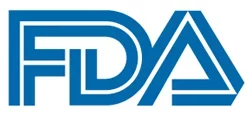Article
FDA Approves Rylaze for Acute Lymphoblastic Leukemia and Lymphoblastic Lymphoma
Author(s):
The FDA has approved asparaginase erwinia chrysanthemi (recombinant)-rywn (Rylaze) as part of a chemotherapy regimen to treat pediatric and adult patients with acute lymphoblastic leukemia and lymphoblastic lymphoma who are allergic to the E. coli-derived asparaginase products.
The review of Rylaze was conducted under Project Orbis, which is conducted through the FDA's Oncology Center of Excellence.

The FDA has approved asparaginase erwinia chrysanthemi (recombinant)-rywn (Rylaze) as part of a chemotherapy regimen to treat pediatric and adult patients with acute lymphoblastic leukemia (ALL) and lymphoblastic lymphoma who are allergic to the E. coli-derived asparaginase products.1
The approval of Rylaze is supported by a study of 102 patients who either had a hypersensitivity to E. coli-derived asparaginases or experienced silent inactivation, results of which showed that the recommended dose of Rylaze provided the target level of asparaginase activity in 94% of patients. The recommended dosage of Rylaze is 25 mg/m2 intramuscularly every 48 hours.
"It is extremely disconcerting to patients, families and providers when there is a lack of access to critical drugs for treatment of a life-threatening, but often curable cancer, due to supply issues," said Gregory Reaman, MD, associate director for pediatric oncology in the FDA's Oncology Center of Excellence. "Today's approval may provide a consistently sourced alternative to a pivotal component of potentially curative therapy for children and adults with this type of leukemia."
The review of Rylaze was conducted under Project Orbis, which is conducted through the FDA's Oncology Center of Excellence, which allows for concurrent submission and review of oncology agents across global regulatory agencies. In this review, the FDA collaborated with Health Canada. The application review for Rylaze in Canada is currently pending.
Previously, the only other FDA-approved drug for patients who have these allergic reactions has been in a global shortage since 2016, the agency stated. Each year, ALL occurs in approximately 5700 patients; about half of these are children, in which ALL is the most common type of pediatric malignancy.
Asparaginase, which is 1 component of the chemotherapy regimen, kills cancer cells by depriving them of substances that are necessary for survival. Approximately 20% of patients are allergic to the standard E. coli-derived asparaginase, and therefore require need an alternative treatment.
In the study of 102 patients supporting the approval, the median courses of Rylaze treatment was 3 courses (range, 1-14), and 38% of patients received at least 4 courses.2
Regarding safety, which was evaluated in a cohort of 33 patients, the most common adverse effects associated with Rylaze include febrile neutropenia (24%), abnormal liver test (12%), fatigue (12%), stomatitis (9%), dehydration (9%), nausea (9%), musculoskeletal pain (6%), pyrexia (6%), drug hypersensitivity (6%), decreased appetite (6%), and diarrhea (6%).
In this cohort, the median age of patients was 11 years (range, 1 to 24); the majority were male (51%), and White (73%). The median number of Rylaze courses was 4 (range, 1-14); 48% of patients received at least 4 courses.
One death occurred at the 25 mg/m2 dosage, which was due to infection. Serious adverse reactions occurred in 55% of patients, the most frequent of which (≥5%) were febrile neutropenia, dehydration, pyrexia, stomatitis, diarrhea, drug hypersensitivity, infection, nausea, and viral infection. Treatment discontinuations due to an AEs occurred in 9% of patients.
In the label for Rylaze, the FDA noted that the drug is contraindicated in patients who have a history of serious hypersensitivity reactions to Erwinia asparaginase, including anaphylaxis; serious pancreatitis during prior asparaginase treatment; serious thrombosis during prior asparaginase treatment; and serious hemorrhagic events during prior asparaginase treatment.
References
- FDA approves component of treatment regimen for most common childhood cancer. News release. FDA. June 30, 2021. Accessed June 30, 2021. https://prn.to/3xe7rbi
- Rylaze (asparaginase erwinia chrysanthemi [recombinant] rywn) injection, for intramuscular use. Prescribing information. Jazz Pharmaceuticals; 2021. Accessed June 30, 2021.









